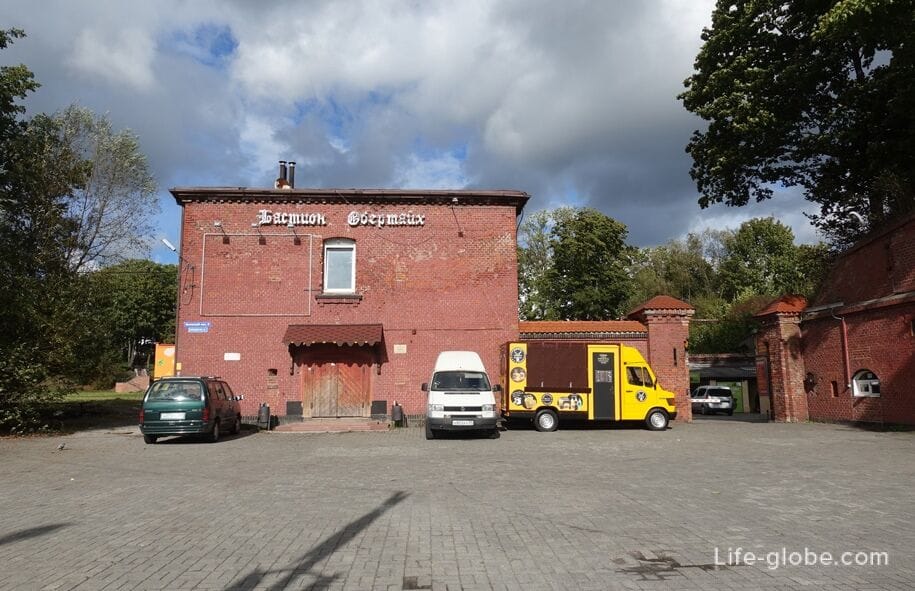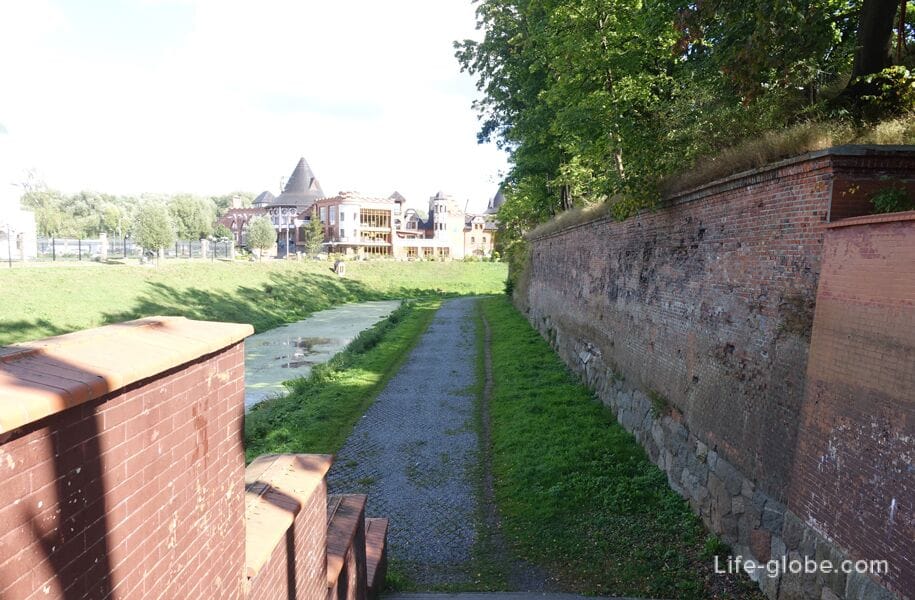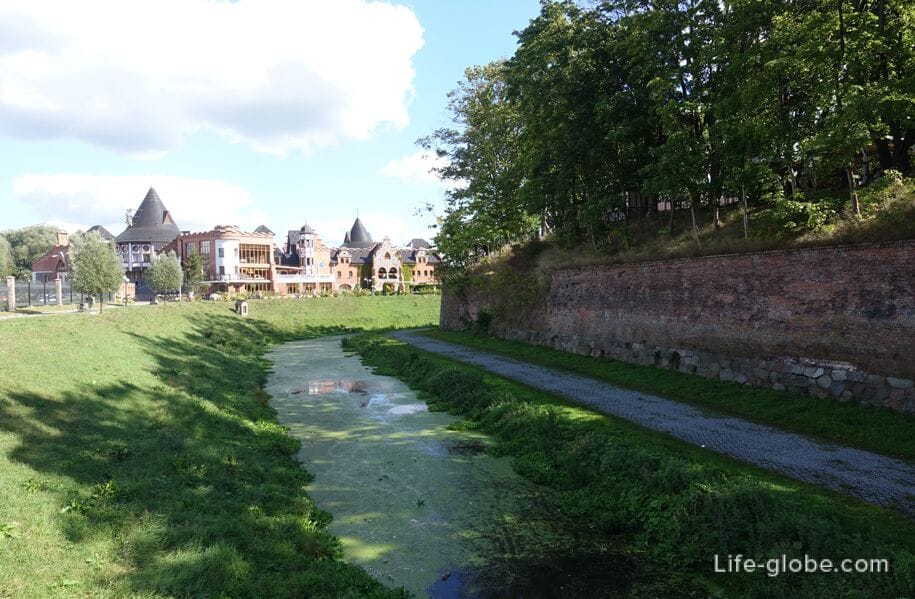
The Oberteich bastion is one of the bastions that were part of the defensive belt of the fortress city of Konigsberg (now the city of Kaliningrad) - the second fortification of the city.
The reduit of the Oberteich bastion was built in the middle of the 19th century (1856-1860) according to the project of the chief of the engineering corps, Infantry General Ernst Ludwig von Aster. Subsequently, the reduit was repeatedly upgraded.
At the time of construction, the reduit was part of the bastion of the same name (built in 1850) with an earthen rampart intended to accommodate artillery positions.
The two-storey ruduit had a rectangular shape in plan with 40 casemates of enfilade arrangement. Cannon and weapon embrasures were provided for frontal and flank shelling of the area. Ruduit had a large basement with passages in the form of arches in the walls separating the casemates. The thickness of the walls of the reduit facing the enemy was 2 meters, while the rear (facing the city center) was 1 meter. The architecture uses cross vaults, arch arches and cornices.
In the post-war period, the bastion was partially rebuilt, and the interior was redeveloped. Currently, private commercial premises are located in the walls of the reduit bastion "Oberteich".
The Oberteich bastion consists of a reduit, a reduit casemate, a half-caponier, five casemated traverses, a moat and an escarpment.
Today, the reduit of the Oberteich bastion is included in the list of sights of the city and is one of the objects of the recommended route "Kaliningrad fortification".
Address of the Obertaich bastion: Litovsky Val street, 1/3 and 5. Located near Rosgarten Gate, Dona Tower (Amber ointment) and Upper Lake.
Coordinates of the "Oberteich" bastion": 54°43'19"N (54.722168), 20°31'35"E (20.526645).


Moat and escarpment of the Obertaich bastion


Above the level of the moat of the bastion there is an earthen embankment of the Lithuanian shaft, along which you can now walk and walk to the bastion "Grolman" and the defensive barracks "Kronprinz".

